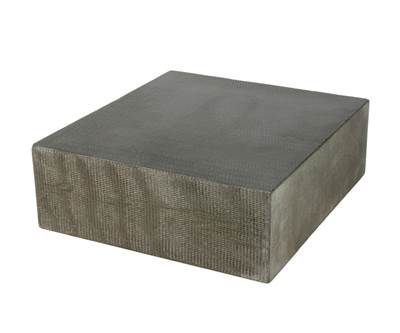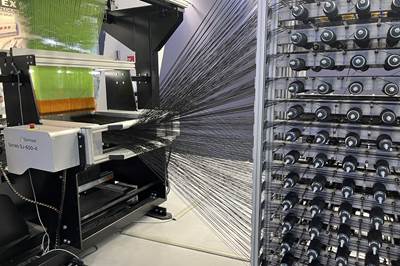3D-woven composites find success in aerospace, space
CAMX 2024: Bally Ribbon Mills experts are displaying the company’s various joints, thermal protection system (TPS) technologies and other 3D woven composites for mission-critical applications.
Share
Bally Ribbon Mills (BRM, Bally, Pa., U.S.) designs, develops and manufactures highly specialized engineered woven fabrics. BRM experts are on hand in to discuss the company’s 3D woven joints, thermal protection systems (TPS) and other 3D structures.
In partnership with NASA (Washington, D.C., U.S.) BRM recently developed a 3D orthogonally woven 3DMAT quartz material for the Orion Multi-Purpose Crew Vehicle’s (MPCV) compression pads. 3DMAT was named the 2023 NASA Government Invention of the Year.
BRM uses 3D continuous weaving to create new joint structures and improve existing joints. Delivering an optimal blend of strength, durability and structural integrity, BRM’s 3D woven joints are available in “Pi – π,” double “T,” “H” and other complex net shapes. According to the company, these joints reduce weight and cost without sacrificing integrity and performance. Because of the nature of the 3D weave, strength and support is translated in all three dimensions, thus enabling the join to reinforce the strength along the load paths of the substructures being joined together. These woven shapes can be tailored to suit the architecture of the structure itself, as well as the subcomponents being joined.
3D woven composites by BRM are said to be particularly successful in aviation heat shield applications such as TPS. These systems are mission-critical components, particularly in space exploration vehicles. The ability to vary yarn types, density, thickness and width, as well as resin type, enables BRM to create fully customizable TPS to fit each specific mission or application’s needs.
Along with TPS systems, 3D woven components also function well as engine parts in aircraft. Replacing traditional titanium engine components with 3D woven carbon fiber composites serves to reduce weight and therefore lifetime cost, all while meeting the rigorous demands of manufacturing and use.
Related Content
-
A new era for ceramic matrix composites
CMC is expanding, with new fiber production in Europe, faster processes and higher temperature materials enabling applications for industry, hypersonics and New Space.
-
ASCEND program update: Designing next-gen, high-rate auto and aerospace composites
GKN Aerospace, McLaren Automotive and U.K.-based partners share goals and progress aiming at high-rate, Industry 4.0-enabled, sustainable materials and processes.
-
Plant tour: Joby Aviation, Marina, Calif., U.S.
As the advanced air mobility market begins to take shape, market leader Joby Aviation works to industrialize composites manufacturing for its first-generation, composites-intensive, all-electric air taxi.
Related Content
A new era for ceramic matrix composites
CMC is expanding, with new fiber production in Europe, faster processes and higher temperature materials enabling applications for industry, hypersonics and New Space.
Read MoreASCEND program update: Designing next-gen, high-rate auto and aerospace composites
GKN Aerospace, McLaren Automotive and U.K.-based partners share goals and progress aiming at high-rate, Industry 4.0-enabled, sustainable materials and processes.
Read MorePlant tour: Joby Aviation, Marina, Calif., U.S.
As the advanced air mobility market begins to take shape, market leader Joby Aviation works to industrialize composites manufacturing for its first-generation, composites-intensive, all-electric air taxi.
Read MoreNext-generation airship design enabled by modern composites
LTA Research’s proof-of-concept Pathfinder 1 modernizes a fully rigid airship design with a largely carbon fiber composite frame. R&D has already begun on higher volume, more automated manufacturing for the future.
Read MoreRead Next
Bally Ribbon Mills technology features infusion for 3D woven joints
Woven fabrics manufacturer Bally Ribbon Mills is highlighting its film infusion capabilities for 3D woven joints woven thermal protection systems and more.
Read MoreOptima 3D demonstrates new 3D weaving technology for ASCC
U.K. company will install compact system with innovative shuttle and digital twin capability for soft and hard composite structures at University of Maine’s new textile lab.
Read More“Structured air” TPS safeguards composite structures
Powered by an 85% air/15% pure polyimide aerogel, Blueshift’s novel material system protects structures during transient thermal events from -200°C to beyond 2400°C for rockets, battery boxes and more.
Read More










